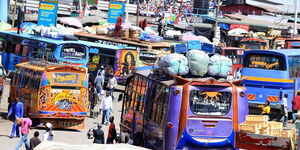In a potentially devastating blow to farmers, the contentious debate surrounding the legality of muguka and miraa continues to escalate, with the prospect of six additional counties considering bans on the sale of these products.
The latest call comes from Muslim leaders in North Eastern, urging governors in Garissa, Wajir, Mandera, Isiolo, Tana River, and Marsabit to follow suit and prohibit the sale of miraa and muguka. Garissa is the second largest market of muguka locally, behind Mombasa County
Garissa is the second largest market of muguka locally, behind Mombasa County. Isiolo County is not far behind. The ban of muguka in three counties last week, has farmers in Embu, Meru and Kirinyaga Counties up in arms. The farmers are staring at losing upto Ksh1 billion a day.
Speaking to the media on Tuesday, May 28, these leaders cited health concerns and socioeconomic disparities stemming from the use of these stimulants in their regions. They emphasised the adverse impact on education, health, and livelihoods, urging swift action to curb what they perceive as a growing crisis.
"If you look at school attendance in these counties, it is very low, and there is no day the sale of this product has brought profits, even to the traders," stated one leader, highlighting the far-reaching consequences on communities.
The move comes amid a backdrop of legal challenges and political maneuvering. President William Ruto has staunchly opposed the bans imposed by Kilifi and Mombasa counties, asserting that muguka is a scheduled crop under the Crops Act 2013 and the Miraa Regulations 2023.
According to Ruto, these regulations, passed by both the National Assembly and the Council of Governors, legitimise the cultivation, sale, and export of muguka.
Ruto's stance aligns with a petition filed against the bans by business interests within the affected counties. They argue that the National Authority for the Campaign Against Alcohol and Drug Abuse (NACADA) has not classified muguka as a narcotic and that the Miraa regulations explicitly recognise both miraa and muguka as legitimate crops.
The petitioners further contest the lack of public participation in the decision-making process and assert that only the national government holds the authority to declare substances as narcotics.
However, the bans have found support among local authorities who argue for the autonomy of county governments in regulating substances within their jurisdictions.
The debate raises fundamental questions about the balance of power between national and local governance structures and underscores the complexities of navigating legal frameworks in a multi-tiered system.
Meanwhile, data from a 2013 study by NACADA sheds light on the prevalence and consequences of khat (miraa) and muguka use in Kenya. The study indicates high rates of consumption, particularly among males, with khat use correlated with factors such as education level, rural residence, and occupation.
Alarmingly, the report highlights the role of peer influence in initiating substance use and underscores the widespread acceptance of miraa within Kenyan society.
Yet, concerns persist regarding the health and socioeconomic implications of unregulated stimulant use. From sleep disorders to addiction and associated criminality, the impact reverberates across communities, exacerbating existing challenges and hindering progress.












